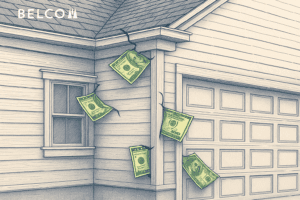One of the most important parts of any railing system, balusters help make your porches, decks, and stairways safer. The vertical shafts hold the handrail and together make up a balustrade. Without them, the railing would be less secure, and small children and pets would be able to slip beneath the rail. Balusters also help give a finished appearance to railings.
Architectural balusters can be made of many materials including stone, ceramic, iron, vinyl, and wood, and they’re designed to match the railing and any columns or posts that may be used in the same area. Wood is one of the most popular and frequently used for its versatility, appearance, ease of installation, and relative cost savings. When choosing a baluster, make sure you pay attention to the attributes of each before making a choice.
Baluster Appearance

One of the first considerations to make when selecting a material for balusters is the appearance. For residential projects, wood is the most commonly used material mostly for the way that it looks and performs long-term. Wrought iron and stone are materials that can also be used in this area, but they often have a very formal appearance that works better in commercial settings and some high-end applications, more than on the typical suburban home.
Vinyl is often considered a replacement for wood on exteriors, mostly because it’s considered a lower maintenance material, but vinyl balusters don’t have the same appearance as wood. They have a smoother, glossier surface that makes them look like what they are – plastic. And while white is a popular color for balusters, most homeowners want the ability to change the color of their railings as desired to match or contrast their trim and siding. Vinyl’s colors are more limited, usually to white and possibly an offwhite, and they can’t be painted, which limits their use and appearance even more.
Decorative wood balusters have some of the most options for style and appearance. They can be formed into decorative shapes or into sleek, modern shafts. They also pair well with bannisters and columns of nearly any shape and style, so it’s possible to create a plain or decorative look depending on the needs of the exterior and the architecture. Vinyl and other materials may have very limited options, but wood excels at versatility.
Durability and Maintenance

Balusters that are installed on porches and decks are both visible parts of the home’s exterior and exposed to a lot of elements that can cause wear and tear over time. Balusters used on upper story decks in particular, also need to remain in good condition to ensure the safety of the railing.
The durability and maintenance of the balusters needs to be considered when selecting materials. Ideally, the balusters need to be able to resist insect activity and rot in order to remain stable for the longest amount of time.
Vinyl Balusters
Vinyl is often thought of as a low maintenance alternative to wood, because it doesn’t require paint. The color won’t peel or chip off since it goes right through the plastic. However, vinyl balusters are not solid, and while some may have a core of aluminum, most are hollow plastic. Like all plastic, vinyl balusters can soften and warp in the heat. In cold climates, they may become brittle and crack, which compromises the integrity of the railing, and means that it may no longer be safe for use.
Wood Balusters
There are many types of exterior wood balusters available for use. Cedar is common because it resists rot and insects naturally. However, cedar isn’t necessarily the strongest wood on the market, and over time it can dent and scratch with frequent use. It also needs to be primed prior to painting to avoid the staining known as “cedar bleed”, which can make it more time consuming to install.
Pressure-treated wood balusters are also fairly common. Pressure- treated wood can sometimes crack over time, and if the wrong fasteners are used, it can cause corrosion, which can compromise the integrity of the railing in other ways.
Pressure-treated wood may also warp, and may be discolored due to the chemicals used in the pressure-treating process, which frequently leads builders and homeowners to look for other materials.
Preservative-Treated Wood Balusters
A better option for wood balusters is preservative-treated wood, which is given a surface treatment to help create a more stable, rot-, and insect-resistant wood. Preservative treated wood like that produced by Belco Forest Products is also pre-primed and ready for installation, so it doesn’t require the same additional steps that cedar requires. The preservatives are also more eco-friendly than most pressure-treated wood chemicals, which can be attractive to many homeowners as well.
By choosing wood balusters made of preservative-treated wood, you get all the benefits of wood’s versatility and beauty, but with a better quality material that will resist the most common issues with wood.
Choose the Right Material for Your Exterior Baluster

The quality and appearance of balusters can have a big impact on the function and appearance of a railing, deck, or porch. Make sure you’re getting a high quality wood product like the preservative-treated primed wood balusters from Belco Forest Products to ensure your next project’s success.












